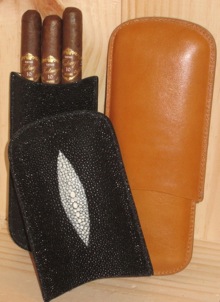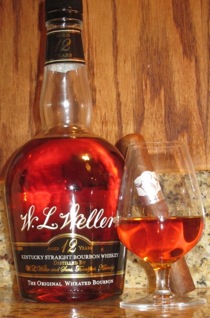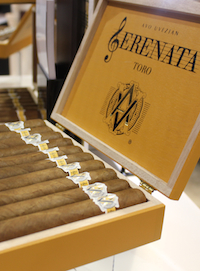Cigar Tip: Check Out Tampa Fuego Exotic Cigar Cases
19 Sep 2013
I’ve never been the type to own fancy cigar accessories. It’s not that I don’t appreciate them, it’s just that I’d rather spend my cigar budget on cigars than fancy humidors and lighters. That’s why I have two coolidors that functionally hold most of my cigars at a perfect humidity, and why my most used lighter is a three-dollar Ronson Jetlite.
 So when Tampa Fuego asked me if I’d like to try out their cigar cases, I wasn’t sure I was the right person. The various cases I normally use (a five-count travel case, an aluminum 20-count case, a three-finger leather case) have all been throw-ins for cigars I’ve bought or events I’ve attended. Still, I agreed and have been using the cigar cases they provided (one made from Stingray skin, another in a tan “natural” smooth leather) for the past month.
So when Tampa Fuego asked me if I’d like to try out their cigar cases, I wasn’t sure I was the right person. The various cases I normally use (a five-count travel case, an aluminum 20-count case, a three-finger leather case) have all been throw-ins for cigars I’ve bought or events I’ve attended. Still, I agreed and have been using the cigar cases they provided (one made from Stingray skin, another in a tan “natural” smooth leather) for the past month.
Tampa Fuego makes their cases in America from a variety of exotic skins and leathers. They are handcrafted at their Largo, Florida, factory. In addition to their cigar cases, Tampa Fuego makes cases designed to fit Xikar cutters and a standard torch lighter. They are all sold individually or as a matching trio.
The quality of the products is obvious. They have a heft that is more significant than leather cigar cases I’ve owned, and the detail of the stitching suggests they would outlast any particular owner.
From a functional standpoint, I appreciate the large size of these cases. They can easily protect three double corona size cigars. I even put an “A” size cigar in one and it had ample protection. Other similar two-part leather cases I’ve had fail to hold a cigar much larger than a toro.
The prices of these make it clear these are luxury items. The stingray case sells for $350, while the leather cases go for $45. But that’s sort of the point: There are cheaper ways to protect and carry around your cigars, but these are eye-catching, luxury accessories.
They come in such exotic options as crocodile, alligator, python, lizard, beaver tail, and stingray, and they’re designed to turn heads. I certainly got more than a few comments and compliments about my cases over the past month, especially the black stingray case. Which is why I think they’d make particularly excellent gifts.
If you’re in the market for a luxury cigar gift, or something special for yourself, check out all of Tampa Fuego’s offerings here. Tampa Fuego has also offered StogieGuys.com readers 20% off through the end of October by using the code “STOGIE” at checkout.
In addition, make sure you’re signed up for our free email newsletter to be entered to win one of the cases I received from Tampa Fuego to write this review.
photo credit: Stogie Guys

 Smoking bans across the country have booted smokers out of restaurants, bars, and other places that wanted their business. Unpleasant weather, and creeping outdoor bans, compound the problem. The spread of bans means in many places you can only smoke in specialized cigar establishments. And eager business owners are seeking to welcome in cigar smokers.
Smoking bans across the country have booted smokers out of restaurants, bars, and other places that wanted their business. Unpleasant weather, and creeping outdoor bans, compound the problem. The spread of bans means in many places you can only smoke in specialized cigar establishments. And eager business owners are seeking to welcome in cigar smokers.
 W.L. Weller is made by Buffalo Trace, which makes a bevy of my favorite bourbons, including but not limited to
W.L. Weller is made by Buffalo Trace, which makes a bevy of my favorite bourbons, including but not limited to 
 It wouldn’t be the first time Nat Cicco has created a brand—without violating any trademarks—that alludes to another brand. A while back, I reviewed the
It wouldn’t be the first time Nat Cicco has created a brand—without violating any trademarks—that alludes to another brand. A while back, I reviewed the 
 It’s my belief that quality is going up across the board in the cigar industry, and smoking plenty of samples only solidifies this opinoin. Obviously these are generalizations and no doubt there are exceptions, but it seems not only are the cigars being produced now better constructed than they were 5-10 years ago, they are better cigars that lack obvious flavor flaws. The result is good for consumers. Whether you buy discounted samplers online, or just pick up what looks interesting at your local cigar shop, odds are you’re going to end up with decent or good cigars.
It’s my belief that quality is going up across the board in the cigar industry, and smoking plenty of samples only solidifies this opinoin. Obviously these are generalizations and no doubt there are exceptions, but it seems not only are the cigars being produced now better constructed than they were 5-10 years ago, they are better cigars that lack obvious flavor flaws. The result is good for consumers. Whether you buy discounted samplers online, or just pick up what looks interesting at your local cigar shop, odds are you’re going to end up with decent or good cigars. Patrick Ashby
Co-Founder & Editor in Chief
Patrick Ashby
Co-Founder & Editor in Chief Patrick Semmens
Co-Founder & Publisher
Patrick Semmens
Co-Founder & Publisher George Edmonson
Tampa Bureau Chief
George Edmonson
Tampa Bureau Chief